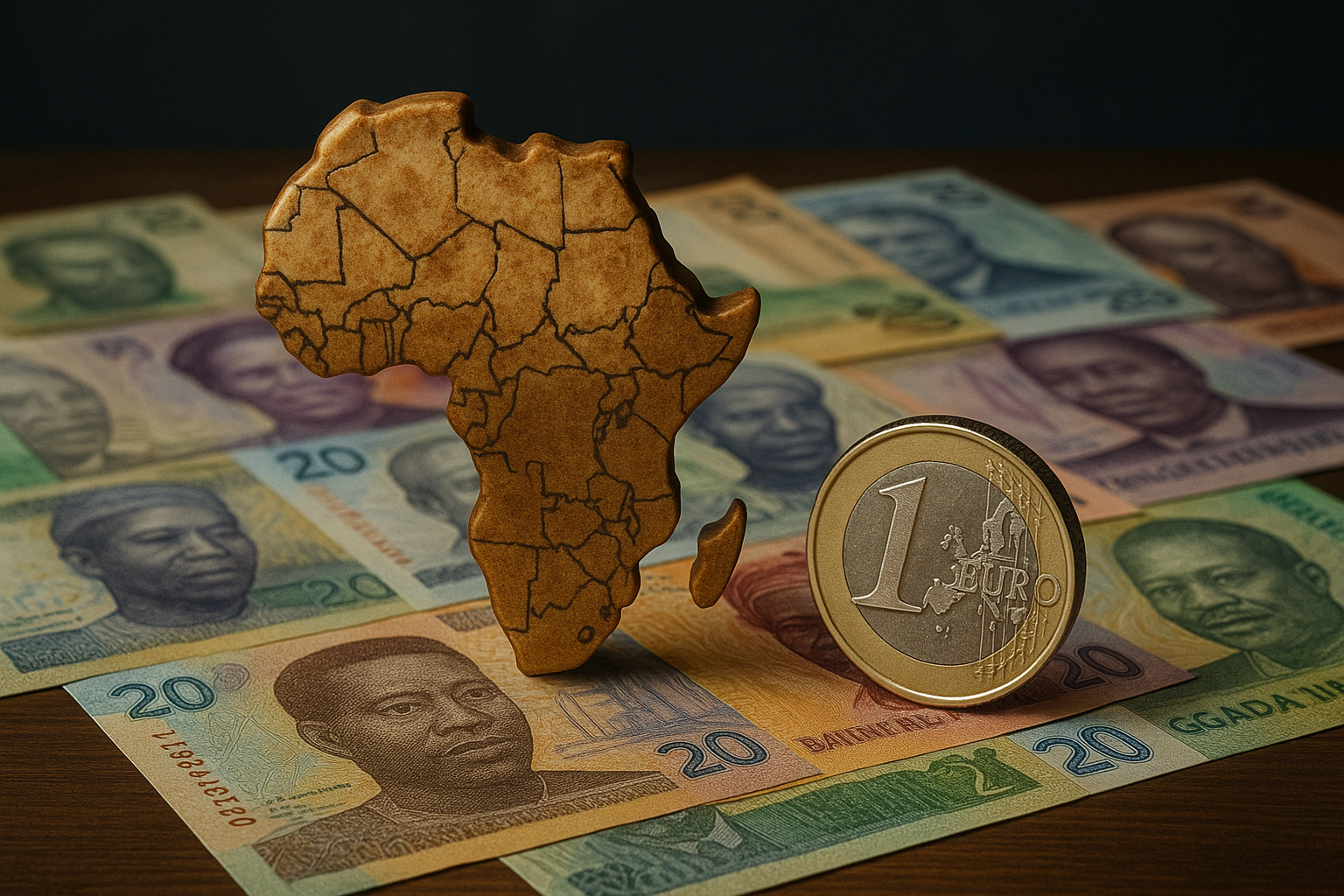Testing PPP in Africa: IMF Study Reveals Euro and Renminbi as Key Currency Anchors
An IMF study tests Purchasing Power Parity (PPP) across West and Central Africa, revealing stronger price convergence in WAEMU than CEMAC, especially when the euro is used as the reference currency. Post-1994, the renminbi gains relevance, signaling China’s rising trade influence and prompting reconsideration of future currency anchors.

In a groundbreaking study released in June 2025, researchers from the International Monetary Fund’s African Department, Abdoul Aziz Wane, Carlos Alberto de Resende, and Jing Xie, have tested the enduring economic theory of Purchasing Power Parity (PPP) across 21 countries in West and Central Africa. Backed by one of the world’s leading financial institutions, the paper dives deep into whether countries in the CFA zone and ECOWAS region exhibit price and exchange rate behaviors consistent with PPP. The research covers four reference (numeraire) currencies: the euro, US dollar, Chinese renminbi, and the CFA franc, using a mix of univariate and panel econometric techniques. The study is more than an academic exercise; it has practical implications for the continent’s push towards monetary integration, notably the proposed ECO currency for ECOWAS.
A Tale of Two Zones: WAEMU vs. CEMAC
One of the study’s most significant contributions is its detailed comparison between the two subzones of the CFA franc union: WAEMU (West African Economic and Monetary Union) and CEMAC (Central African Economic and Monetary Community). While both blocs share the same currency, the CFA franc, and peg it to the euro, their economic dynamics differ sharply. The researchers find stronger evidence of PPP in the WAEMU region than in CEMAC. The difference may stem from structural characteristics, particularly CEMAC’s high dependence on oil exports, which subjects its economies to greater price volatility and external shocks. By contrast, WAEMU countries exhibit more consistent price behavior and faster reversion to PPP, especially when the euro is used as the numeraire.
Interestingly, the 1994 devaluation of the CFA franc appears to have been a watershed moment. Post-devaluation, many countries in the CFA zone began showing stronger tendencies toward price convergence, suggesting that the reset in exchange rate policy helped bring domestic prices closer to international levels. For WAEMU, the peg to the euro has evidently served as a stabilizing anchor, promoting inflation control and gradual integration with eurozone pricing behavior.
The Rise of the Renminbi in Africa’s Monetary Calculus
Perhaps the most surprising result in the study is the growing relevance of the Chinese renminbi. Although traditionally overlooked in African monetary assessments, the renminbi produced some of the fastest convergence speeds to PPP in the post-devaluation period, particularly in ECOWAS countries. The authors suggest this reflects the increasing trade integration between China and African economies. China’s rising export volumes and infrastructure investments may be subtly reshaping the pricing environment in African markets.
This trend could influence future currency policy decisions. As African nations explore alternatives to the dollar or euro pegs, the renminbi may emerge as a more prominent candidate. However, adopting or even informally aligning with the renminbi would come with its own set of geopolitical and economic trade-offs, including exposure to China’s monetary policies and potential shifts in global supply chains.
Convergence Through Foreign Prices, Not Domestic Reform
A particularly compelling insight from the study is that PPP convergence in Africa happens mostly through foreign price adjustments, not domestic ones. That is, deviations in the real exchange rate are more often corrected through movements in the nominal exchange rate of foreign currencies or changes in foreign inflation rates, rather than through shifts in local prices. The error correction models and cointegration analyses support this conclusion.
This points to a persistent rigidity in African domestic price systems, likely caused by underdeveloped markets, limited competition, or regulatory bottlenecks. In effect, local economies are price-takers, heavily influenced by foreign currency dynamics. For countries with pegged currencies like the CFA franc, this rigidity could limit their ability to respond to asymmetric shocks, and highlights a need for market liberalization and institutional reform. If countries aim to fully benefit from a common currency or an integrated monetary system, enhancing domestic price flexibility must be a priority.
Implications for Africa’s Monetary Future
The study concludes with policy reflections that are both timely and forward-looking. For WAEMU, the current euro peg remains economically justifiable, having promoted macroeconomic stability and supported PPP behavior. For CEMAC, however, the results raise deeper questions about the wisdom of maintaining the same anchor as WAEMU, given the bloc’s oil dependency and weaker alignment with euro-area price dynamics.
For ECOWAS, which is actively considering a new common currency (ECO), the findings suggest that any successful monetary integration must pay close attention to the choice of anchor currency and the internal cohesion of participating economies. The renminbi’s performance as a numeraire opens new possibilities but also complicates the strategic landscape. Above all, the results urge policymakers to remain adaptable, PPP evidence is time-sensitive, and regular assessments of price behavior and exchange rate relationships are crucial for effective monetary design.
The IMF’s detailed and data-rich analysis provides a clear-eyed look at the realities of price convergence in West and Central Africa. It underscores the importance of both external alignment and internal flexibility as the region charts its course toward deeper economic integration. With shifting trade patterns, emerging global currencies, and persistent structural rigidities, Africa’s monetary future will depend not just on currency choices but on the institutional agility and policy sophistication of its leaders.
- READ MORE ON:
- International Monetary Fund
- Purchasing Power Parity
- PPP
- CFA franc
- CEMAC
- WAEMU
- ECOWAS
- FIRST PUBLISHED IN:
- Devdiscourse










